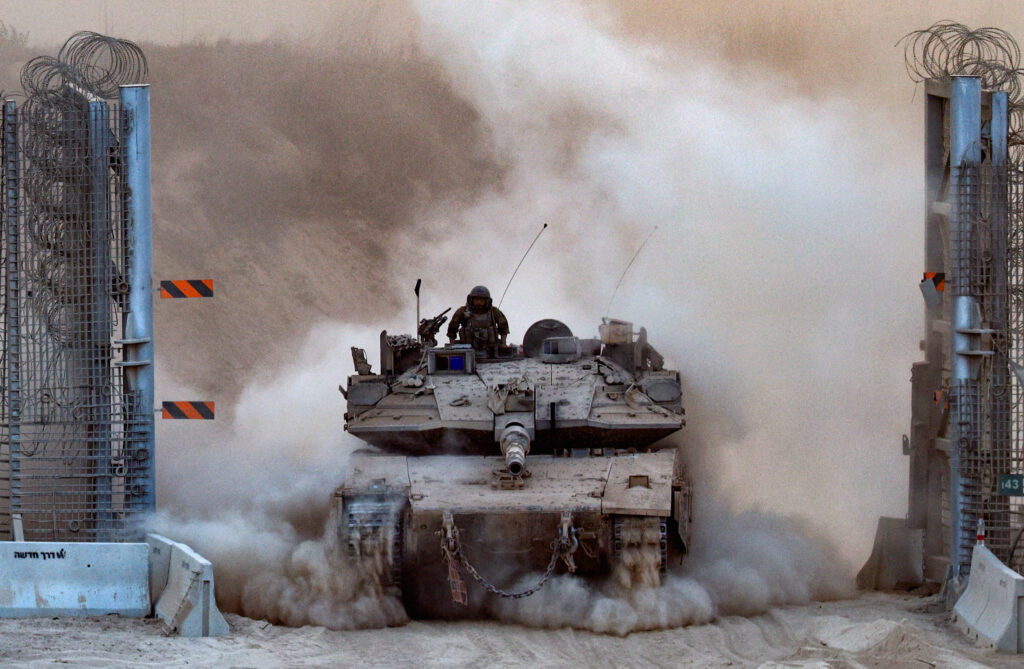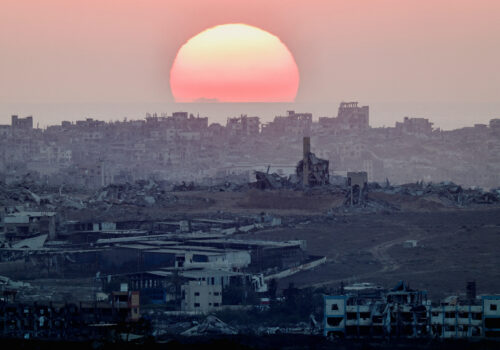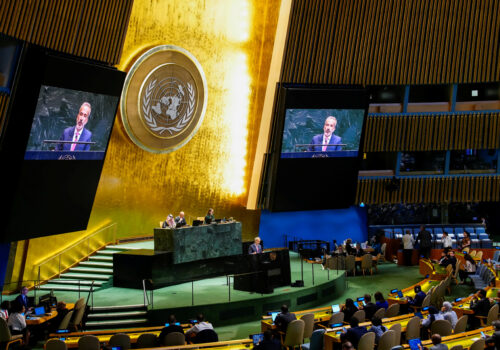By approving a decision to clear and take control of Gaza City later this year, Israel appears to be making a high-stakes bet—militarily, diplomatically, and politically. After nearly two years of brutal conflict following the Hamas-led October 7 attacks, Israel is preparing for a deeper push into the heart of Gaza’s largest population center.
But this isn’t simply about eliminating Hamas strongholds or reasserting deterrence. The decision to delay the occupation, or the holding of territory, until the war’s two-year mark suggests a broader strategy: to change the strategic calculus of Hamas and force serious negotiations. Yet the risks are immense, and the aftermath could lead to an entrenched insurgency if mismanaged.
Hamas has refused to release all remaining hostages unless Israel ends the war entirely, leaving Hamas with a postwar role in Gaza. This is a nonstarter for Israel, which now appears to be trying a new approach.
Israeli leaders say it is not a long-term play. “We don’t want to keep it,” Prime Minister Benjamin Netanyahu said Thursday. But if the war ends and no credible alternative is ready, then the burden to run Gaza may fall—by design or default—on Israel itself.
A tactical move with strategic intent
The Israel Defense Forces (IDF) have already carried out intense operations throughout Gaza, including targeted incursions into Gaza City, Khan Younis, and Rafah. However, none of those operations constituted a long-term reoccupation of major urban centers. The Israeli security cabinet’s decision to formally occupy Gaza City in the coming weeks marks a turning point.
This decision is not about taking territory for the sake of holding it; it’s about political leverage. By occupying the symbolic and administrative heart of the Gaza Strip, Israel sends a clear message: Time is not on Hamas’s side, and continued resistance only invites deeper Israeli entrenchment. If Hamas is banking on international pressure or war fatigue to compel an Israeli withdrawal, this move upends that assumption.
The timeline is telling. Less than two months from now will mark two years since the deadliest single-day attack on Israelis in the country’s history. For Netanyahu and the Israeli security establishment, occupying Gaza City near this anniversary serves two purposes: It underscores Israel’s resolve, and it creates a pressure point for negotiations. Israel can signal to its international partners that it has been patient and methodical, and it is now escalating in response to Hamas’s intransigence, not out of retribution but strategic necessity.
Occupation requires manpower and will be costly
But this is not a low-cost move. Occupying Gaza City will require thousands—possibly tens of thousands—of troops to secure neighborhoods, defend against improvised explosive devises and ambushes, maintain logistical supply chains, and conduct ongoing counterterrorism operations. Urban occupation is one of the most manpower-intensive military tasks. Every street corner and apartment building becomes a potential battlefield.
While the IDF has shown proficiency in high-intensity urban combat, occupation is a different proposition. It requires not just soldiers with rifles, but an infrastructure of civil-military coordination, intelligence, and stability operations. It also puts Israeli soldiers in prolonged close contact with a hostile or traumatized population—an environment ripe for insurgent recruitment and propaganda wins.
The Israeli public, which has largely supported the war effort to date, may not be prepared for the long-term toll this could take—not just in soldiers’ lives, but in national morale, budgetary strains, and international backlash. Gaza is already one of the most densely populated and devastated regions in the world. Prolonged occupation risks entangling Israel in day-to-day governance challenges it is neither equipped for nor politically eager to assume.
Forcing a shift in Hamas’s calculus
Nonetheless, the strategic rationale remains: By raising the cost of Hamas’s continued resistance, Israel hopes to change the group’s internal decision-making. So far, Hamas has shown little appetite for a deal that includes surrendering power in Gaza or releasing hostages without major concessions. A permanent Israeli presence in Gaza City could threaten Hamas’s core identity as the ruling authority in the strip.
In other words, Israel may not need to “win” Gaza City militarily; it needs to make its occupation untenable for Hamas politically. This is coercive diplomacy through military means—reframing the war not just as a battle for survival, but as a pressure campaign to extract terms Hamas has so far refused to accept.
However, coercion cuts both ways. The more pressure Israel applies, the more Hamas may double down on its resistance narrative, appealing to regional and international sympathizers. The conflict could escalate into a broader regional confrontation or draw greater intervention from Iran-backed proxies. And the longer Israel occupies urban areas, the more international legitimacy it may lose.
The post-Hamas problem: Who governs, and at what cost?
An even bigger question looms: What comes after Hamas? If Israeli forces do occupy Gaza City and succeed in removing Hamas from power, who fills the vacuum? Some proposals have floated an international Arab security force, possibly backed by the Palestinian Authority (PA), but these plans are speculative at best and politically fraught. The PA is viewed with suspicion in Gaza, and Arab states are reluctant to assume control over a war-torn territory under Israeli military watch.
If the ultimate burden falls to Israel, that would place the IDF in the role of both security guarantor and de facto governing authority. History shows how quickly such roles can devolve into quagmires. The US experience in Iraq is a stark reminder: Removing a hostile regime is relatively fast; securing the peace is the long, grinding challenge.
Should the local population view the IDF as occupiers rather than liberators, a protracted insurgency is not just possible—it’s likely. Gaza’s dense urban environment, deep social trauma, and history of resistance create ideal conditions for asymmetric warfare. Even if Hamas is deposed, remnants or new factions could emerge, prolonging instability for years.
Leverage with a long tail
Israel’s decision to occupy Gaza City is an ambitious move aimed at accelerating the endgame in a war with no easy exits. It is an attempt to force Hamas to the table and reassert strategic dominance. But it is also a gamble—one that requires overwhelming force, careful planning, and a credible plan for what comes next. Without those, Israel risks trading one form of conflict for another: from a war against Hamas to a war against a brewing insurgency.
Alex Plitsas is a nonresident senior fellow with the Middle East Programs’ Scowcroft Middle East Security Initiative and leads the Initiative’s Counterterrorism Project. He previously served as the chief of sensitive activities for special operations and combating terrorism in the Office of the US Secretary of Defense.
Further reading
Thu, Aug 7, 2025
Why Gaza’s post-Hamas future depends on its Arab neighbors—not just Israel
MENASource By
The international community is likely to support—both ideologically and financially—a local or Arab-led post-war solution for Gaza.
Fri, Aug 1, 2025
Diplomatic momentum for recognizing a State of Palestine is growing. Here’s what to know.
New Atlanticist By
France, the United Kingdom, Canada, Portugal, and several other countries have said they may recognize a State of Palestine at the UN General Assembly in September.
Tue, Jul 29, 2025
‘I can barely stand or make it through the day’: First-hand views of Gaza’s starvation
MENASource By Arwa Damon
Israel has systematically denied aid entry into Gaza, and perpetuated false narratives intended to discredit the humanitarian community.
Image: An Israeli tank enters Israel from Gaza, July 28, 2025. REUTERS/Amir Cohen.




